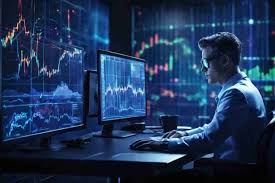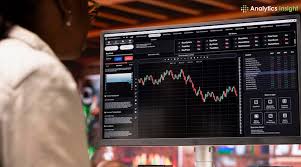Exploring the Future Algo Trading for Crypto

Exploring the Future: Algo Trading for Crypto
In today’s rapidly evolving financial landscape, the emergence of cryptocurrency has opened up new avenues for traders and investors alike. Among the most innovative methods of trading is algorithmic trading, commonly referred to as algo trading for crypto. This article delves into the intricacies of this technology, its advantages, disadvantages, and its growing significance in the world of digital assets. To enhance your understanding, algo trading for crypto click here as we explore the different facets of algo trading.
What is Algorithmic Trading?
Algorithmic trading is a method of executing trades using algorithms, which are computer programs that follow specific sets of instructions to analyze data, identify opportunities, and execute trades at optimal prices. In the context of crypto, this involves leveraging advanced mathematical models, machine learning techniques, and real-time data feeds to maximize profit potential while minimizing risks.
The Mechanics of Algo Trading in Crypto
Algorithmic trading operates on several key components, each contributing to its efficacy:
- Data Analysis: Algo trading platforms utilize vast amounts of data, including market trends, trading volumes, and historical price movements, to inform trading decisions.
- Execution: Algorithms can execute trades at lightning speed, ensuring that traders are able to capitalize on price movements that may be fleeting.
- Backtesting: Prior to live execution, traders can test their algorithms on historical data to evaluate their effectiveness, enabling them to refine their strategies before risking real capital.
- Risk Management: Automated trading systems can incorporate various risk management measures such as stop-loss orders, ensuring that losses are minimized during adverse market conditions.
Benefits of Algo Trading for Crypto
There are numerous benefits associated with algorithmic trading in the cryptocurrency market:

- Speed and Efficiency: The ability to execute trades at extraordinary speeds allows traders to take advantage of market opportunities that are often missed by manual trading methods.
- Emotionless Trading: Automated systems remove emotional decision-making from trading, leading to more disciplined and data-driven actions.
- Diversification: Algorithms can simultaneously monitor multiple markets and assets, providing diversification opportunities that might be overwhelming for human traders.
- Reduced Costs: Algo trading can help minimize transaction and operational costs by optimizing trade sizes and execution strategies.
Challenges and Risks of Algo Trading
Despite its many advantages, algo trading is not without its challenges and risks:
- Market Risks: Algo trading can be vulnerable to sudden market fluctuations, which may lead to significant losses if the algorithms are not adequately trained to handle unexpected events.
- Technical Failures: System malfunctions or connectivity issues can disrupt trading activities, potentially leading to missed opportunities or unintended trades.
- Regulatory Concerns: As the cryptocurrency market is still developing, regulatory frameworks surrounding algo trading can vary greatly, affecting how strategies are implemented and utilized.
- Over-Optimization: Algorithms that are excessively tailored to historical data may perform poorly in live markets if unforeseen conditions arise.
Building Your Own Algo Trading System
For those interested in venturing into algo trading for crypto, building a personalized trading system may seem daunting, but it is entirely feasible. Here are some fundamental steps to consider:
- Define Strategy: Determine your trading goals and strategies. What indicators will you use? Will you focus on day trading, swing trading, or another methodology?
- Choose a Programming Language: Popular languages for building trading algorithms include Python and R due to their excellent data analysis libraries and simplicity.
- Backtesting: Implement a backtesting framework to rigorously test your algorithm against historical data to verify its effectiveness before live trading.
- Connect to APIs: Utilize exchanges which provide APIs (Application Programming Interfaces) to facilitate the retrieval of market data and execution of trades.
- Monitor and Optimize: Continuously assess the performance of your algorithm and make adjustments to improve its outcomes.
The Future of Algo Trading in Crypto
The landscape of algo trading for crypto is set to evolve significantly, driven by advancements in technology, data science, and machine learning. Key trends to watch include:
- Increased Use of AI: Enhanced artificial intelligence capabilities may lead to more sophisticated trading algorithms that adapt to changing market conditions.
- Decentralized Finance (DeFi): The rise of DeFi platforms presents new opportunities for algo trading, allowing users to trade in a decentralized manner, often with reduced fees.
- Integration with Social Trading: Combining algo trading with social trading platforms can provide traders with insights drawn from aggregated community strategies.
- Enhanced Regulatory Frameworks: As regulators develop clearer guidelines for cryptocurrencies, algo trading may become more standardized and accessible to a wider audience.
Conclusion
Algo trading for crypto presents a compelling opportunity for traders looking to leverage technology to improve their trading outcomes. By understanding the intricacies of algorithmic trading, its advantages, and the challenges it poses, traders can make informed decisions that align with their investment objectives. As the market continues to evolve, those who embrace algo trading may find themselves well-positioned to navigate the complexities of the cryptocurrency landscape.